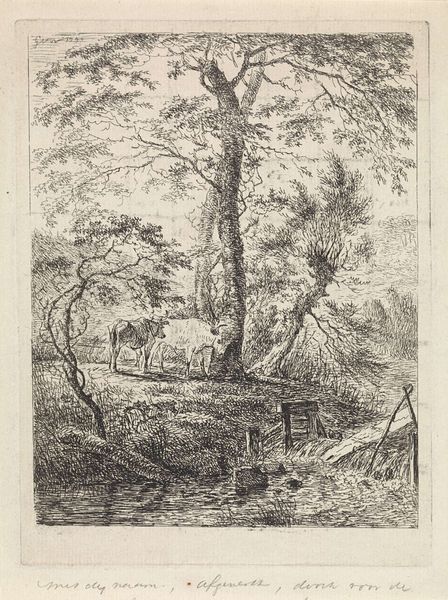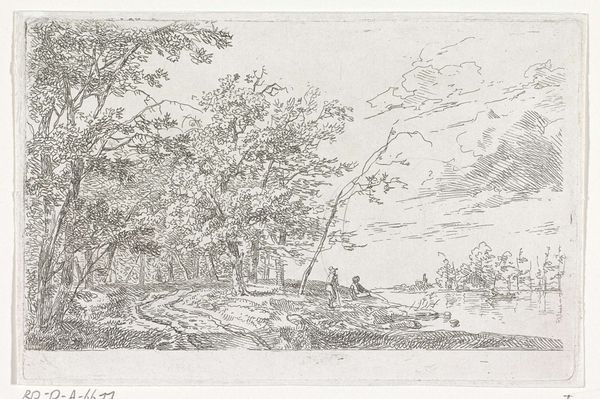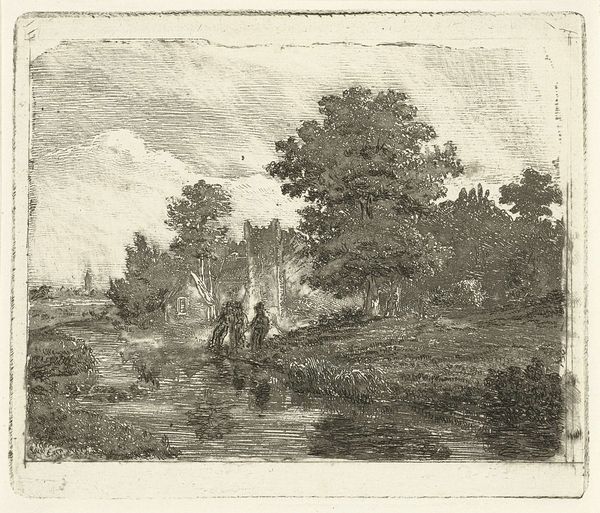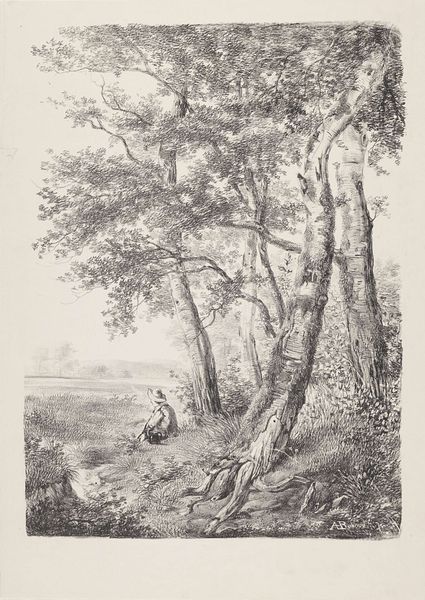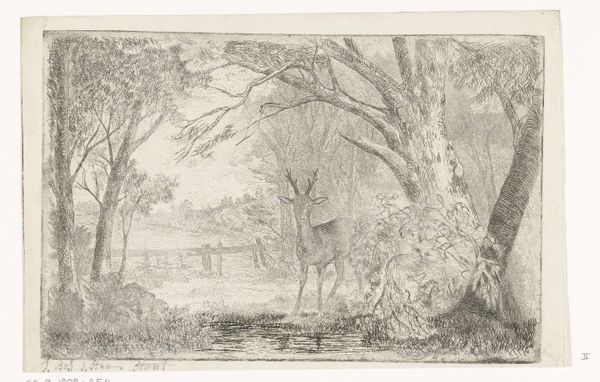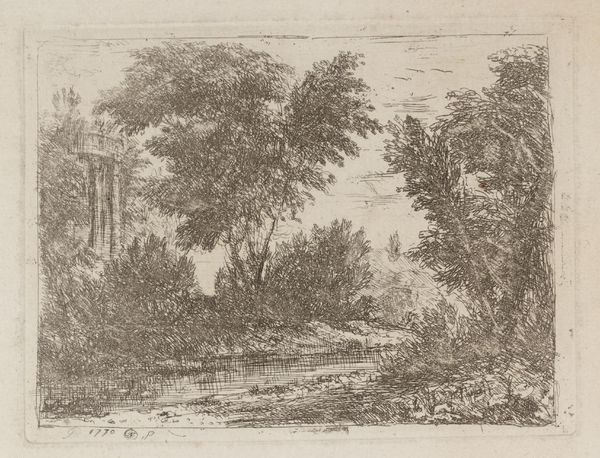
print, etching, intaglio
#
dutch-golden-age
# print
#
etching
#
intaglio
#
landscape
#
etching
Dimensions: height 237 mm, width 329 mm
Copyright: Rijks Museum: Open Domain
Editor: Here we have Ignatius van der Stock’s “Landscape with a Pack Ass,” an intaglio print likely made between 1653 and 1665. The level of detail he achieves through etching is pretty stunning. What stands out to you about this piece? Curator: The process is key here. Think about the copper plate, the acid bath, the intense labor. This wasn't some spontaneous sketch, but a deliberate act of production. Note how van der Stock uses the etching to render a landscape – typically high art territory – accessible and reproducible. How does this print function as a commodity within Dutch society? Editor: I guess I hadn’t considered it as a product. I was focusing more on the art of it, you know? So, this challenges that "high art" distinction. Curator: Precisely. Where do we locate "art" here? In the original landscape, Van der Stock’s skill, or in the final print that could be owned and distributed? Think of the networks involved: the copper mining, the artisan crafting the plate, the printing, distribution, and the consumption of the image by the viewer. Does understanding all of that change how you see it? Editor: Definitely. It's not just an image of nature anymore. It's evidence of a whole economic and social structure, too! Curator: Exactly! We tend to think about these prints in isolation as objects of art, overlooking how they acted as both cultural and material objects embedded in a complex network of production, circulation, and consumption. Editor: I'll never look at an old print the same way again. Thank you!
Comments
No comments
Be the first to comment and join the conversation on the ultimate creative platform.





